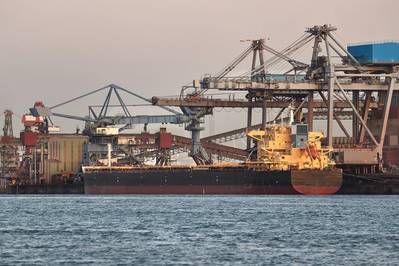
Baltic Dry Index Hits 12-year Peak

The Baltic Exchange’s main dry bulk sea freight index rose for a fourth straight session to a 12-year high, buoyed by higher rates across vessel segments.
The overall index, which factors in rates for capesize, panamax, supramax and handysize vessels, rose 150 points, or 3.4%, to 4,560, its highest since November 2009.
Strong iron ore and coal trades are driving dry bulk rates higher, brokerage Jefferies said in a note.
“Congestion and other inefficiencies related to COVID-19 and geopolitical tensions are benefiting the dry bulk market by removing effective fleet supply,” it said.
The capesize index increased by 415 points, or 6.1%, to 7,200, hitting its highest in 12 years.
Average daily earnings for capesizes, which transport 150,000-tonne cargoes such as iron ore and coal, rose by $3,446 to $59,715.
Increasing iron ore production and exports from Brazil and Australia, as well as coal demand from India and China to replenish stocks ahead of a colder winter, has aided the rise in the capesize segment, Jefferies said.
Iron ore futures in Asia rebounded , although doubts lingered whether gains could be sustained given the collapse in China’s demand and improving supply prospects.
The panamax index rose 31 points, or 0.8%, to 3,961, its highest in more than ten weeks.
Average daily earnings for panamaxes, which ferry 60,000-70,000 tonne coal or grain cargoes, increased by $274 to $35,647.
Among smaller vessels, the supramax index rose for a sixth straight session, adding 11 points to 3,338, its highest in over two weeks.

